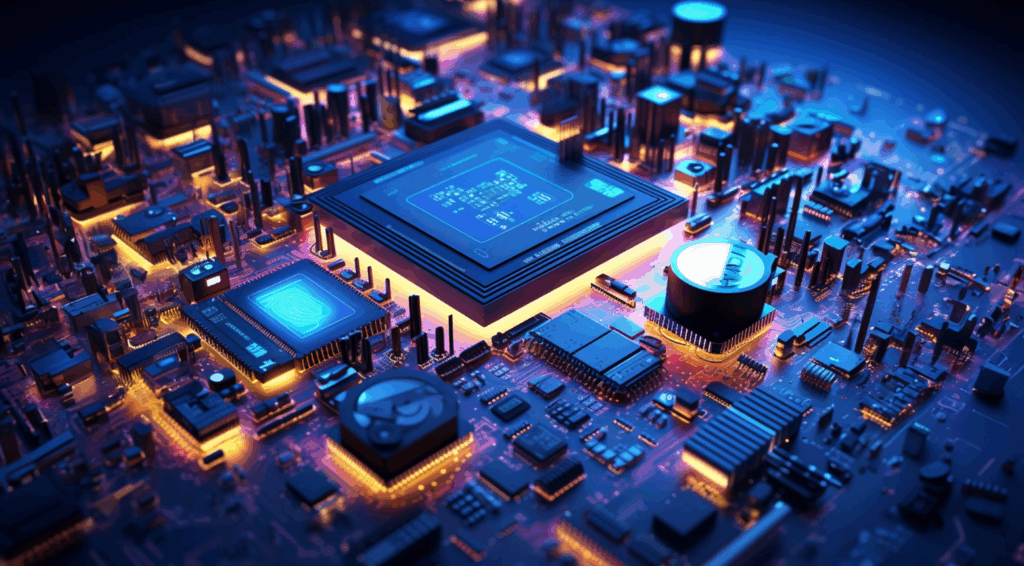What Are Electron Devices and Circuits?
Electron devices and circuits are the foundation of modern electronics, shaping how machines, gadgets, and systems function. In simple terms, electron devices are the components that control and manipulate the flow of electrical current, allowing for communication, data processing, automation, and more. Without electron devices and circuits, most of today’s technology—from smartphones to industrial machinery—would not be possible.
In electron devices and circuits, individual components such as resistors, capacitors, diodes, and transistors are connected through wiring or printed circuit boards. These components work together to allow electric current to pass through in a controlled way, enabling devices to perform tasks like amplification, signal processing, and switching. Examples range from simple LED lighting setups to complex computer processors.
The Role of Electron Devices and Circuits in Modern Technology
Electron devices and circuits play a critical role in everyday life, powering everything from home appliances to cutting-edge medical equipment. They make our routines faster, more efficient, and more connected. Whether you are using a mobile phone, a laptop, or a smart home system, electron devices and circuits are working behind the scenes to make the technology functional.
Industries such as healthcare, manufacturing, and communications rely heavily on electron devices and circuits. These systems ensure that machines run accurately, that data is transmitted reliably, and that automated processes function smoothly. In essence, they form the technological backbone of the modern world.
Main Types of Electron Devices and Circuits
When it comes to electron devices and circuits, components are often classified as passive or active. Passive components, such as resistors, capacitors, and inductors, store or dissipate energy without generating power. Active components, such as transistors and integrated circuits, can amplify signals and control current flow. Both play vital roles in building reliable and efficient systems.
Electron devices and circuits also include semiconductor devices like diodes, MOSFETs, and BJTs, which regulate current direction, voltage, and amplification. These components are found in everything from simple chargers to high-performance computing hardware.
Understanding Electronic Circuits in Electron Devices and Circuits
An electronic circuit in electron devices and circuits is the pathway through which electrical current flows across interconnected components. These pathways can be built using wires, PCB traces, or a combination of both. Each circuit is carefully designed to perform specific tasks, such as amplifying sound or converting signals from one form to another.
In electron devices and circuits, circuits can be analog, digital, or mixed-signal. Analog circuits process continuous signals, digital circuits handle binary data, and mixed-signal circuits combine both to manage complex tasks like audio-video processing in smartphones.
Common Types of Circuits in Electron Devices and Circuits
Analog circuits in electron devices and circuits work with continuous voltage levels to create smooth and natural outputs. Examples include audio amplifiers and temperature sensors, which rely on gradual signal variations. These circuits are crucial when accuracy and detail are important in a system’s performance.
Digital circuits in electron devices and circuits, on the other hand, operate with discrete binary signals—zeros and ones. They are the basis of microprocessors, digital logic gates, and other computing systems. Mixed-signal circuits bridge the gap, enabling advanced devices like smartphones and modems to handle both types of signals.
Designing Electron Devices and Circuits
Designing electron devices and circuits begins with creating and understanding circuit schematics. These diagrams use standardized symbols to represent each component and show how they connect. A clear schematic helps engineers build, test, and troubleshoot the circuit effectively.
The next stage in designing electron devices and circuits is prototyping and PCB design. Prototypes allow for real-world testing of the system’s functions, while PCB layouts turn the design into a physical board that connects all components securely and efficiently.
Testing Tools for Electron Devices and Circuits
In developing and maintaining electron devices and circuits, testing tools are essential. An oscilloscope is used to visualize voltage changes over time, helping engineers analyze waveforms, detect noise, and measure signal frequencies. This ensures the circuit behaves as expected.
A multimeter is another essential tool for electron devices and circuits. It measures voltage, current, resistance, and continuity, making it a versatile device for quick checks and detailed troubleshooting. Both tools are indispensable for professionals and hobbyists alike.
Applications of Electron Devices and Circuits
In consumer technology, electron devices and circuits power gadgets like smartphones, laptops, and televisions. These devices rely on circuits for data processing, connectivity, and user interaction, enabling entertainment, communication, and productivity in daily life.
In industrial and medical fields, electron devices and circuits are equally crucial. They control manufacturing automation systems, robotics, diagnostic equipment, and life-support machines, ensuring safety, precision, and efficiency in high-stakes environments.
Conclusion
Electron devices and circuits are at the heart of technological progress, shaping how we live, work, and interact with machines. By combining active, passive, and semiconductor components, these systems manage power, process signals, and enable automation on a global scale.
From smartphones to medical imaging systems, electron devices and circuits remain essential for innovation and efficiency. As technology advances, their role will only grow, continuing to power the tools and systems that define modern life.
